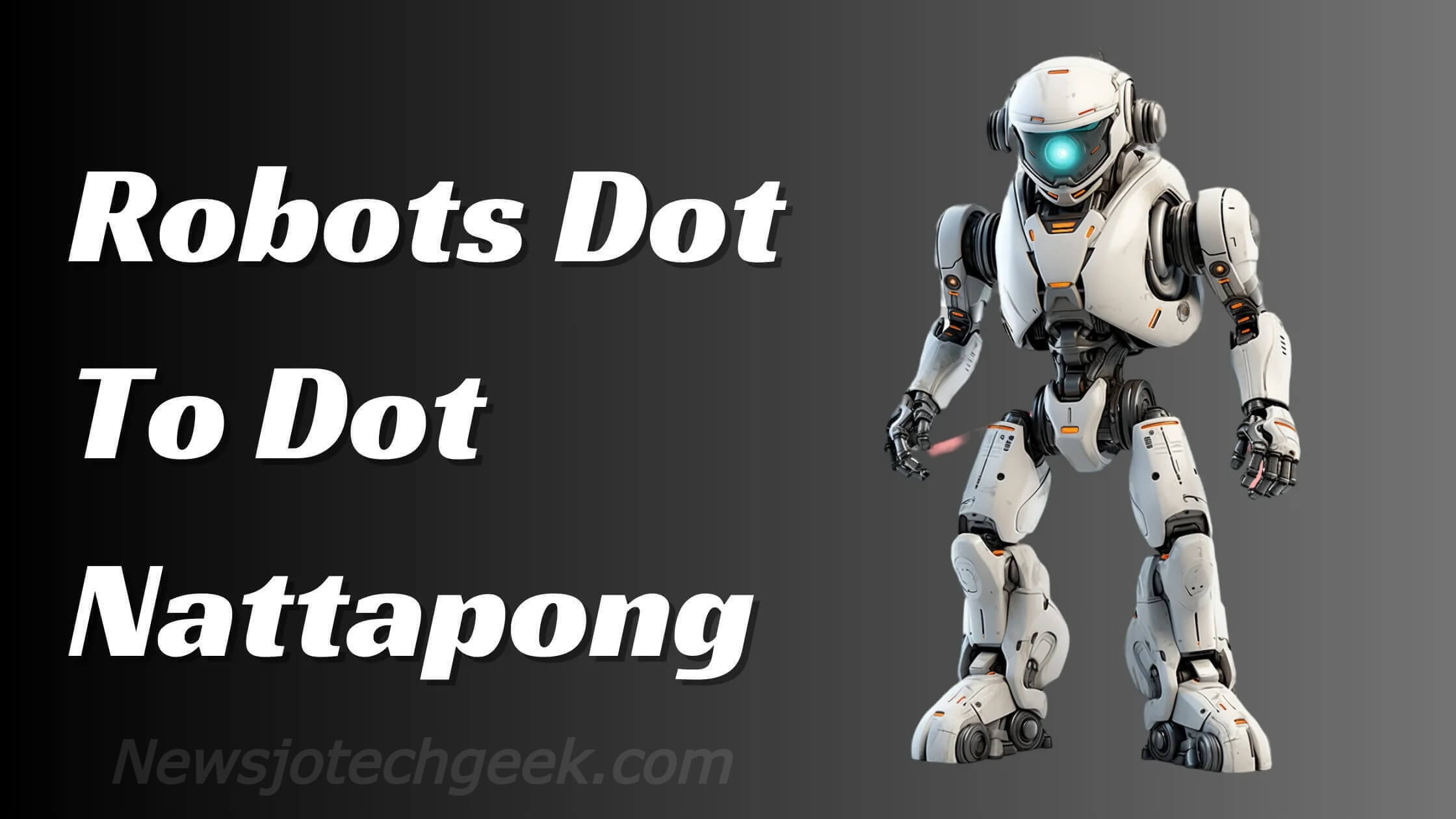Introduction
In the evolving world of robotics, one niche innovation is capturing the imagination of tech enthusiasts, educators, and hobbyists alike: Robots Dot to Dot Nattapong.
These robots combine the fundamentals of robotics and creative interaction, making them perfect for both educational and recreational purposes. Let’s explore how this technology is redefining the landscape of interactive learning and creativity.
What is Robots Dot to Dot?
At its core, dot-to-dot robots are interactive machines designed to connect dots, forming images or patterns by following a pre-programmed path.
These robots offer a hands-on, creative way to introduce users to robotics and basic programming concepts.
Dot-to-dot robots make learning more accessible by blending fun, art, and tech into one package.
Who is Nattapong?

Nattapong is a forward-thinking innovator in the robotics field, with a particular focus on educational and creative applications.
His work on dot-to-dot robots has set a new standard for how robotics can be used to engage students and hobbyists alike.
Nattapong’s designs are known for being intuitive, affordable, and highly customizable, making them suitable for a wide audience.
Technological Foundation of Robots Dot to Dot Nattapong
Nattapong’s robots are built on a solid technological foundation, incorporating a variety of modern tools and techniques. Here’s a breakdown of the key technologies:
- Sensors: Dot-to-dot robots rely on advanced sensors to detect lines or dots on a surface, allowing them to follow a path with precision.
- Artificial Intelligence: Simple AI systems help these robots adapt to different patterns and improve performance over time.
- Programmability: The robots can be programmed easily, even by beginners, using visual programming interfaces or block-based coding, which makes them ideal for classrooms.
These technologies make dot-to-dot robots more than just a novelty—they’re sophisticated learning tools designed to teach core concepts in robotics and programming.
Key Features of Robots Dot to Dot Nattapong
Nattapong’s robots stand out due to their distinct and innovative features, such as:
- User-Friendly Interface: The robots are designed to be easily programmable, even for those with minimal technical experience.
- Customizable Patterns: Users can create their patterns for the robots to follow, promoting creativity and interactive learning.
- Educational Integration: These robots come with tools and resources tailored for educational use, helping teachers incorporate them into STEM curriculums.
- Affordability: Unlike many other robots, Nattapong’s creations are priced accessibly, making them suitable for schools, hobbyists, and parents.
Applications of Robots Dot to Dot Nattapong
The versatility of dot-to-dot robots makes them useful in a wide range of applications:
- Education: These robots are widely used in classrooms to introduce students to programming, robotics, and engineering in an interactive manner. Their hands-on approach makes learning about technology more engaging.
- Creative Art Projects: Dot-to-dot robots are perfect for artistic endeavors, allowing users to create intricate patterns and designs. The integration of robotics and art gives users a fun way to explore both fields.
- Entertainment: These robots are also a hit in the entertainment sector, providing users with a fun way to engage with technology, whether they are creating art or solving puzzles.
Benefits of Robots Dot to Dot Nattapong

Nattapong’s dot-to-dot robots offer several benefits that go beyond the basic educational scope:
- Encourages Creative Thinking: By allowing users to create their patterns and designs, these robots foster creativity and problem-solving skills.
- Hands-On Learning: They offer an interactive learning experience, making complex topics like coding, robotics, and engineering more accessible to young learners.
- STEM Engagement: Dot-to-dot robots are an excellent way to engage students in STEM (Science, Technology, Engineering, and Math) subjects, as they provide a practical, enjoyable introduction to these fields.
The Future of Robots Dot to Dot Nattapong
As technology continues to advance, the future of dot-to-dot robots looks promising. Some key trends and future possibilities include:
- AI Integration: While current dot-to-dot robots use simple AI, future versions could incorporate more advanced machine learning capabilities, allowing the robots to adapt to user behavior and create even more complex designs.
- Augmented Reality (AR): The combination of dot-to-dot robotics with AR could allow users to visualize and interact with their robot’s designs in real time, adding a new layer of engagement.
- Expansion into New Markets: As Nattapong’s robots become more popular, we can expect to see their use expand into fields like professional design, advanced art projects, and more sophisticated educational tools.
Challenges in the Development of Dot-to-Dot Robots
Despite their advantages, dot-to-dot robots face some development challenges:
- Technical Limitations: The current simplicity of the robots’ programming might limit their ability to engage more advanced users, though ongoing development aims to bridge this gap.
- Cost of Scaling: While the robots are affordable, scaling up their production while maintaining quality might present challenges as demand grows.
How to Choose the Right Dot-to-Dot Robot
When choosing a dot-to-dot robot, there are several factors to keep in mind:
- Ease of Use: Look for a robot that’s user-friendly and doesn’t require extensive technical knowledge.
- Customizability: Ensure that the robot allows for the creation of custom patterns, as this enhances the creative and learning experience.
- Educational Resources: If you’re using the robot in a classroom, make sure it comes with accompanying educational materials that align with STEM curriculums.
Conclusion
Nattapong’s dot-to-dot robots represent a perfect blend of creativity, technology, and education. By making robotics more accessible, they provide a unique learning tool that engages both the mind and the imagination.
Whether used in classrooms, for art or simply as a fun introduction to robotics, these robots are paving the way for a more interactive and engaging approach to technology.




